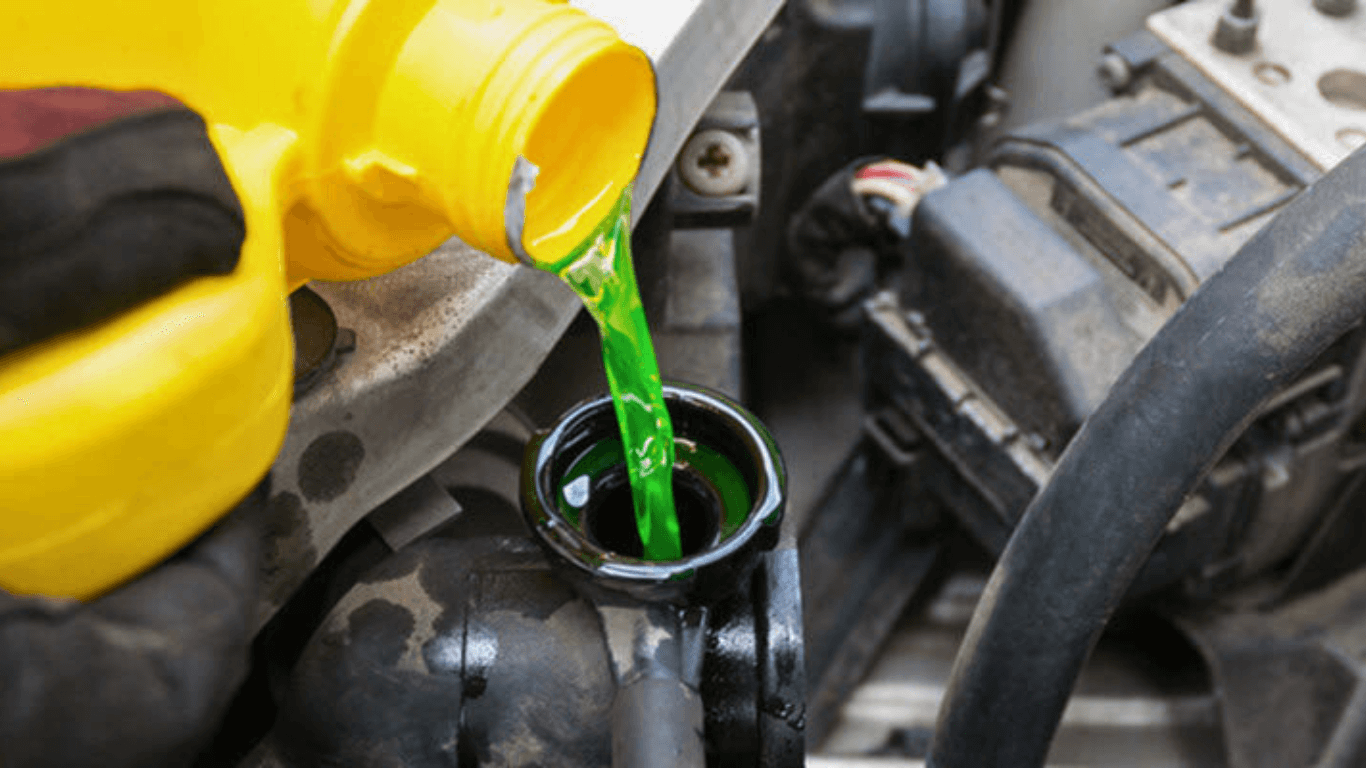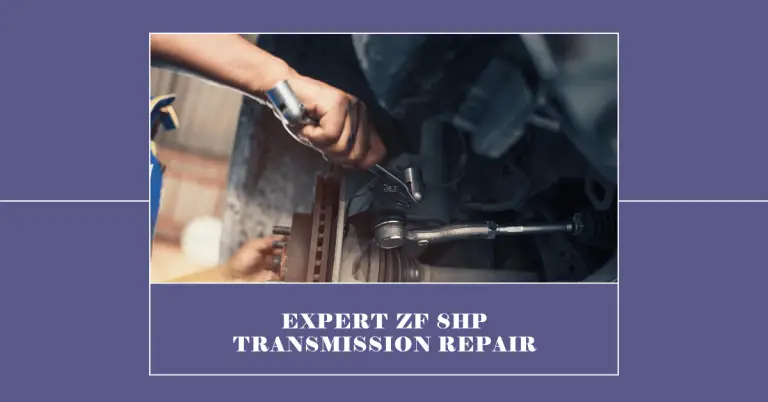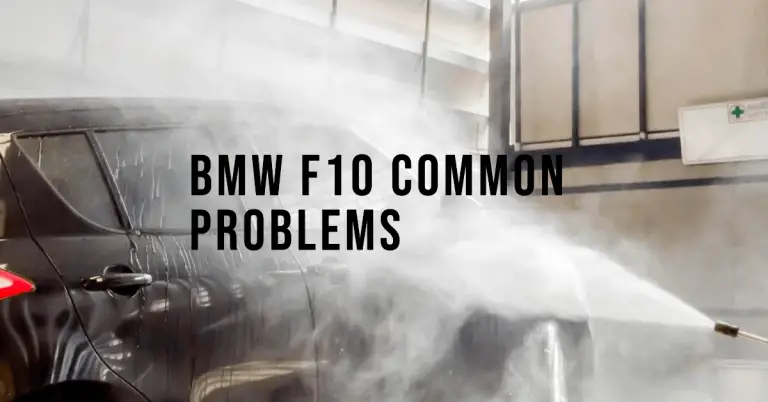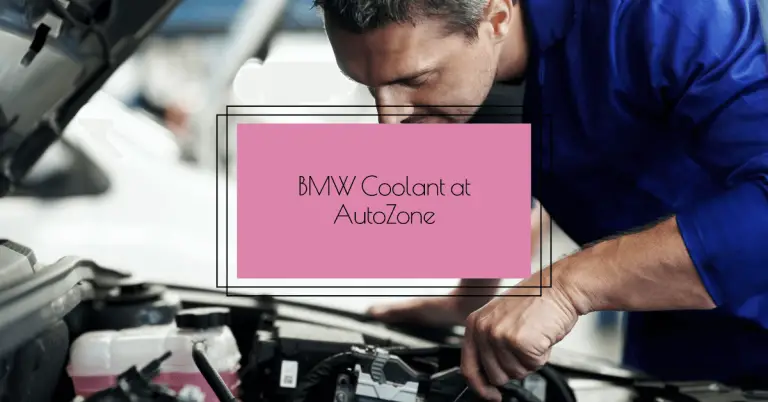BMW Leaking Coolant but Not Overheating? 6 Common Causes and Solutions
Is your BMW losing coolant but the engine isn’t overheating? Don’t panic, help is here. This detailed guide will cover the 6 most common reasons for a BMW coolant leak without overheating and how to diagnose and repair the issue yourself.
Finding the source of a coolant leak can be frustrating, but it’s important to fix it promptly to avoid potential overheating issues or engine damage down the line. Read on to learn why your BMW may be losing coolant without overheating along with actionable tips to stop leaks and keep your engine running smoothly for years to come.
How the Cooling System Works in BMWs
Before diving into the common causes of coolant leaks, it helps to understand how the cooling system works in BMW vehicles.
The cooling system’s main job is to keep your engine from overheating. It does this by circulating a coolant mixture through passages in the engine block and cylinder head, absorbing excess heat. The hot coolant then flows through radiator hoses into the radiator where it is cooled before circulating back to the engine.
This closed loop system is pressurized, with the radiator cap maintaining around 15 PSI of pressure inside the system. The pressurization raises the coolant’s boiling point so it can handle the high temperatures inside the engine.
Common components of the cooling system include:
- Radiator – cools hot coolant from the engine
- Electric cooling fans – pulls air through radiator to aid cooling
- Water pump – circulates coolant through the system
- Thermostat – controls coolant flow to engine and radiator
- Hoses – carry coolant between components
- Radiator cap – maintains system pressure
As long as this sealed system stays intact with no leaks, the coolant can continuously cycle and maintain proper engine temperature. But any leaks in hoses, the radiator, water pump, or other components will allow coolant to escape, leading to overheating issues over time.
Even a relatively minor leak can cause the engine to eventually overheat if left unattended. That’s because as coolant is lost, the system can’t stay topped off and air pockets develop. This reduces the system’s effectiveness at cooling the engine.
That’s why it’s crucial to identify and repair any coolant leaks promptly, even if your BMW isn’t overheating yet. The next sections cover the most common sources of leaks.
Check Your BMW’s Coolant Level Frequently
The #1 initial sign of a coolant leak in your BMW is low coolant level. Most BMWs have a pressurized coolant reservoir or expansion tank that acts as an overflow for the radiator. When the engine is cold, the coolant level should be between the “Min” and “Max” lines on the reservoir.
As the engine warms up and the coolant expands, excess fluid flows through the radiator cap and into the reservoir tank. Then when it cools back down, coolant is drawn back into the radiator from the reservoir.
So keep an eye on that reservoir tank coolant level! Top it back up to the “Max” line with the recommended BMW coolant mix if it drops below the halfway point.
Low coolant level means it is likely leaking out somewhere in the system. Even if you don’t see puddles on the ground, a lower than normal coolant level indicates a potential leak.
Make it a habit to visually check the reservoir level at least monthly when you are checking other fluids. This allows you to spot drops in the coolant level over time and identify leaks before they cause overheating issues.
Now let’s look at the 6 most common causes of BMW coolant leaks and steps for diagnosing and repairing them.
6 Common Reasons for BMW Coolant Leaks Without Overheating
1. Failed Coolant Hose
One of the most common places to spring a leak on an older BMW is from a degraded coolant hose. The hoses that carry hot coolant deteriorate over time. As hoses age, the material breaks down and becomes prone to cracking, splitting, or popping off fittings.
Once a crack forms in the hose, pressurized coolant can spew out rapidly or a slow leak may develop. BMW coolant hoses most prone to failure include:
- Upper and lower radiator hoses
- Heater core hoses under the dash
- Engine oil cooler lines
- Turbocharger coolant lines
- Expansion tank overflow hoses
Warning signs of a bad hose:
- Visibly cracked, soft, swollen hoses
- Wet staining around hose connections
- Drilled hose clamps from previous owner’s leak repairs
Many BMW owners simply ignore minor hose leaks and just top off the coolant periodically. But even small leaks should be addressed quickly, as they tend to worsen over time. Replacing degraded coolant hoses is always cheaper than a potential overheating related engine repair down the road.
To diagnose and fix a hose leak:
- Visually inspect all coolant hoses for cracks, bulges, rust on the fittings, or signs of weeping coolant
- Firmly squeeze along the hose length to check for soft spongy sections
- Replace any suspect hoses with new BMW certified hoses
- Use factory style spring clamps or BMW OEM screw clamps for reliable sealing
- Refill coolant back to proper level after repairs
Following BMW’s recommended coolant hose replacement intervals (typically every 6-8 years or 70k-100k miles) prevents leaks and overheating issues. Don’t wait for visible cracks or leaks to replace aging hoses. Periodic hose replacement provides inexpensive cooling system protection to maximize engine life.
2. Water Pump Failure
The water pump is the heart of your BMW’s cooling system, circulating the coolant through the engine and radiator. A worn water pump can develop leaks in two ways:
1. Leaking shaft seal – The water pump’s metal impeller shaft passes through a rubber seal. Over time, this seal dries out and leaks coolant from the pump housing.
2. Bearing failure – Most water pumps have a ball bearing that allows the impeller to spin. If this bearing wears out, the impeller wobbles excessively and damages the pump housing, causing external coolant leaks. Bad bearings also make loud whining or grinding noises.
Spotting a leaking water pump can be tricky. Since it’s rotation helps propel coolant through the system, a mild pump leak may not drip onto the ground. Leaked coolant can get slung all over the front of the engine and evaporate.
Warning signs of water pump failure:
- Weeping coolant from the water pump housing
- Coolant wetness around the water pump and radiator
- Grinding, whining noise from the pump, especially when cold
- Overheating issues despite adequate coolant level
To properly diagnose a water pump leak:
- Feeler for drips or weeping around the water pump housing
- Look for dried white or green crustiness around the pump and radiator seams
- Pressure test the cooling system to confirm the source of leaks
Replacing a bad BMW water pump involves:
- Draining the cooling system
- Removing accessory drive belts
- Taking off the fan/clutch and pulley
- Unbolting the pump and transferring over gaskets and impeller
- Refilling the cooling system properly after installation
Many BMW water pumps have plastic impellers prone to early failure. Always insist on a new BMW OEM water pump with a metal impeller for longest life. Don’t take chances reusing an old pump. A quality pump replacement is cheap insurance against overheating disasters down the road.
3. Damaged Radiator or Radiator Cap
As your BMW ages, corrosion and debris can damage its radiator over time, leading to leaks. The most common failure points include:
- Pinhole leaks in the radiator tubes or side tanks – tiny holes caused by internal corrosion and erosion allow coolant to weep out slowly.
- Damaged radiator mounting points – the plastic radiator end tanks can crack around the mounting grommets, causing leaks.
- Compromised radiator cap – if the pressure spring gets weak or the cap’s rubber gasket decays, the system can’t maintain pressure and coolant leaks past the cap.
Small radiator leaks are often overlooked since the droplets dry up instantly on hot surfaces. But even pinhole leaks lead to coolant loss over time. Catching them early prevents overheating.
Warning signs of a leaky radiator or cap:
- White crusty staining around seams of radiator and upper hose
- Coolant puddle under the car when parked (after warming up)
- Poor heat output despite adequate coolant level
- The reservoir bottle needing frequent top-offs
To accurately diagnose a leaky BMW radiator:
- Visually inspect for external damage or pinhole leaks in the radiator tubes
- Check for leaks at plastic tank seams, mounting grommets, upper hose
- Pressure test the cooling system to confirm and find leaks
- Make sure the radiator cap seals properly and holds rated pressure
Fixing a leaking or damaged BMW radiator involves:
- Draining out all coolant
- Removing fan assembly and shroud
- Unbolting and taking out the radiator
- Transferring over automatic transmission and A/C condenser lines
- Installing new OEM or upgraded performance radiator
- Refilling and bleeding the cooling system
Even if the leak seems minor, radiators rarely seal back up once pinholes develop. And stop leak additives can clog up the radiator. Your best bet is to replace the radiator at the first sign of leaks before severe overheating results.
4. Blown Head Gasket
While not extremely common on lower mileage BMW engines, a blown head gasket should be considered if you’re losing significant coolant with no external leaks detected.
A head gasket seals the junction between the engine block and cylinder head. Its failure allows coolant and combustion gases to mix together internally.
The main signs of a BMW head gasket failure include:
- Overheating with no visible external coolant leaks
- White smoke from the exhaust
- Bubbly oil or white deposits inside the oil filler cap
- Engine oil that looks milky or foamy
The milky engine oil is a dead giveaway, since it indicates coolant is leaking into the oil galley passages.
To confirm a blown BMW head gasket:
- Monitor the expansion tank coolant level, if it rapidly drops with no external leaks the gasket is blown
- Check for white exhaust smoke, especially at start up
- Look for milky oil in the valve covers and oil filler cap
- Do a combustion leak test to check for hydrocarbons in the coolant
- Perform a cylinder leak down test to identify the bad cylinder(s)
Repairing a blown BMW head gasket requires:
- Removing the intake, exhaust, and cylinder head
- Checking the head and block deck surfaces for warpage
- Replacing the old gasket with a new multi-layer steel BMW gasket
- Checking, reseating, and lapping the valves as needed
- Torqueing everything to factory specs and testing for leaks
If the head or block deck is warped or badly damaged, machining at a machine shop will be required to true the surfaces for a proper seal with the new gasket.
Ignoring a blown head gasket leads to overheating and the mixing of oil and coolant, which can ruin the bearings. So this type of internal coolant leak needs immediate attention to save the engine.
5. Leaky Thermostat Housing
The plastic thermostat housing mounted on the front of most BMW engines is prone to cracking over time. This leads to leaks of coolant dripping down the front of the engine.
You’ll typically see green or orange staining down the engine block coming from a leaking thermostat housing. The leak may drip steadily or only occur once the engine fully warms up and system pressure rises.
Warning signs your BMW thermostat housing needs replacement:
- Weeping coolant leak down the front of the engine
- White crusty buildup around the thermostat housing
- Coolant staining on accessories like the belt, pulleys, and sensors
- Running temperature issues or trouble heating up
To properly diagnose a thermostat housing leak:
- Visually inspect the housing for cracks and stains
- Feel around the housing for moisture while the engine is hot
- Pressure test the cooling system to verify the leak source
Repairing a leaking BMW thermostat housing involves:
- Draining some coolant to lower the level
- Disconnecting sensors and housing bolts
- Removing the housing and cleaning the sealing surfaces
- Installing a new housing with fresh gasket/seal
- Refilling the system and checking for leaks
The thermostat itself can also fail and leak internally, so it’s smart to install a new thermostat when replacing the housing. Use an OEM housing made of durable plastic composite, not cheap aftermarket plastic.
With BMW’s triple black composite coolant, the staining on the housing gives leaks away instantly. Don’t ignore a leaky thermostat housing, as the problem will worsen over time if left unaddressed.
6. Pinhole Leaks in the Heater Core
BMW heater cores are prone to developing tiny internal pinhole leaks over years of heating and cooling cycles. Since the heater core is buried inside the dashboard, these small leaks don’t drip out where you can see them.
The main symptom of a leaking heater core is the sweet, nostril-burning odor of coolant wafting through the cabin vents as you drive. Some drivers first notice foggy windows since the coolant moisture gets blown onto the glass.
You may also see a tiny coolant puddle under the car as pressure forces the droplets out through the firewall insulation. But the main indicator is smelling that sickly sweet coolant odor through the vents.
Warning signs of a BMW heater core starting to leak:
- Strong coolant odor from the vents as you drive
- Foggy windows even when A/C is not in use
- Small coolant puddles under the passenger footwell
To confirm and diagnose a leaky BMW heater core:
- Identify the source of the coolant smell coming from vents
- Look for staining or wetness around heater ducts under the dash
- Pressure test the system to verify the leak before condemning the heater core
Repairing a leaking heater core in a BMW requires:
- Removing the dashboard instrument panel
- Taking out the HVAC blower assembly
- Extracting the heater core from the ventilation ducts
- Installing the new heater core with fresh seals
- Reassembling dash components and refilling with coolant
Since the heater core is buried so deep inside, most BMW owners don’t tackle this job themselves. While not extremely complex, it’s very labor intensive and requires dashboard removal. So have an experienced BMW technician handle heater core replacement.
Don’t ignore the sweet coolant smell from your vents, as heater core leaks worsen over time. And the dripping coolant can damage interior components under the dash.
How to Diagnose Your BMW’s Coolant Leak?
Finding the exact source of BMW coolant leaks can sometimes be tricky. A pressure test is the main diagnostic method shops use to pinpoint external leaks.
Here are some tips for diagnosing your BMW’s coolant leak at home:
- Look for leak warning signs – Inspect components like hoses, water pump, thermostat housing for stains, crustiness, or wetness. See if coolant is dripping on hot exhaust.
- Note leak color and smell – BMW’s Organic Acid Technology (OAT) coolant is bright orange when new. Watch for orange staining or drips. Also smell for the sweet, acidic odor.
- Monitor coolant level and temperature changes – If the expansion tank level drops with no visible external leaks, suspect an internal leak like a head gasket or heater core.
- Let engine fully warm up, then inspect – Shut engine off and look for new drips after it’s hot. Pressure rises when warm, making leaks more apparent.
- Check ground under car after driving – Extended driving pressurizes the system, forcing out leaks. Look for fresh puddles under potential problem areas after driving.
- Use a UV dye leak detection kit – Adding fluorescent dye to the coolant allows you to spot the smallest leak by shining a UV light over suspect areas. Glowing dye indicates the leak origin.
- Do a pressure test – Use a kit to pressurize the cooling system. Pressure will drop immediately in the location of any external leak. This method confirms the source of elusive leaks.
Methodically checking over components while the system is hot and pressurized provides the best odds of spotting the source of any leaks. UV dye kits also take the guesswork out of finding leaks. Don’t ignore any drips or coolant smells, as small leaks lead to big overheating problems if left unchecked.
Stopping BMW Coolant Leaks and Preventing Overheating Issues
Coolant leaks left unattended can quickly spiral into overheating issues or even engine damage down the line. Here are some tips for properly repairing leaks and keeping your BMW running cool:
- Use new BMW certified OEM parts – For components like hoses, water pump, and thermostat housing don’t cut corners with cheap aftermarket parts. Stick with Genuine BMW or reputable OE suppliers when repairing leaks.
- Replace degraded coolant hoses – Inspect and replace any suspect coolant hoses, especially high wear items like radiator hoses. Don’t wait for visible cracks or bulges to develop.
- Install new thermostat housing – If your plastic housing is cracked or leaking, install a new housing with metal reinforced neck for extended life.
- Change out water pump – Don’t gamble on a pump with any sort of play, noise or leaks. A new BMW water pump is cheap insurance against overheating.
- Don’t use stop leak additives – Chemical sealants and stop leaks can clog up components like radiators and heater cores. Fix leaks properly by replacing bad parts.
- Properly bleed coolant system – After repairs, thoroughly bleed out air pockets by squeezing hoses and running engine up to temperature with cap off.
- Do annual cooling system check – Make it a habit to inspect components for leaks and hoses for condition yearly. Catch issues early.
- Flush and refill coolant every 2-3 years – Regular complete coolant draining, flushing, and refill keeps the system clean. Use BMW blue or purple coolant only.
- Check engine oil for milky consistency – Milky or foamy oil indicates coolant mixing in, a sign of head gasket failure. Address immediately to save the engine.
By using quality BMW cooling system components, periodically inspecting for leaks, and preemptively replacing aging parts, you can help minimize the chances of being left stranded with an overheated BMW. Don’t ignore any drips, drops, or coolant odors coming from your engine – fix all leaks promptly.
Conclusion
BMW coolant leaks left unchecked can quickly snowball into catastrophic overheating and severe engine damage. But not all leaks are immediately apparent and can be tricky to diagnose.
This guide covered the 6 most common sources of hard-to-find BMW coolant leaks, along with tips for inspecting your system and pinpointing leak locations. Coolant hoses, water pump, radiator, head gasket, thermostat housing, and heater core issues account for the majority of BMW coolant loss concerns.
Don’t just keep topping off your reservoir every week. Take the time to properly diagnose the leak source and repair it with quality BMW OEM parts. Well-maintained cooling systems last for years and hundreds of thousands of miles. But neglecting necessary repairs inevitably leads to expensive engine damage down the road.
Stay proactive by monitoring your coolant level monthly, inspecting components annually, and immediately investigating any drips or coolant smells. Address minor leaks now before they leave you stranded with an overheated BMW. Your engine will thank you!







